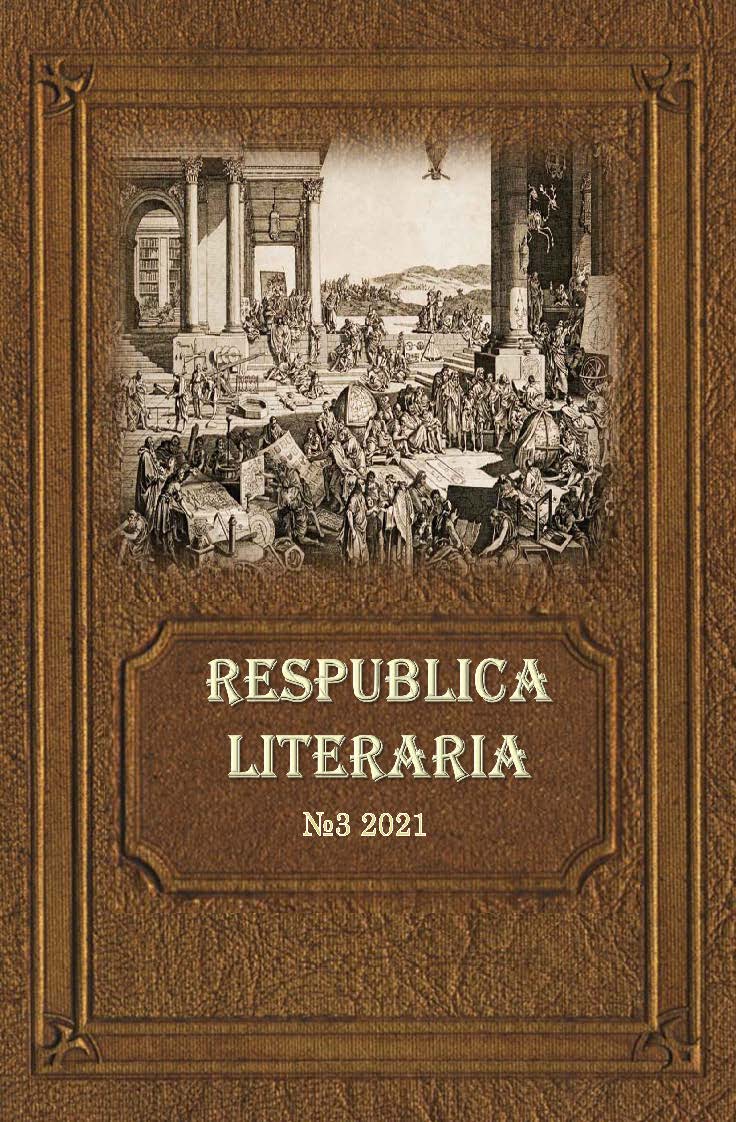Heuristic Capabilities of I. Wallerstein's Model of Peripheralization of Societies: Summarizing Criticisms
DOI:
https://doi.org/10.47850/RL.2021.2.3.104-120Keywords:
world-system approach, core of the world-system, periphery, peripheralization, resistance of societies, exploitation, co-evolutionAbstract
The article summarizes the results of criticism of I. Wallerstein's model of peripheralization, carried out at different times by foreign researchers who used this model to interpret processes in pre-capitalist systems and societies. On this basis, the authors formulate a number of requirements for the subsequent development of a theoretical model of relations between the core and the periphery of the world-system approach of I. Wallerstein. The authors believe that the results of the study may be relevant for the analysis of societies undergoing a process of peripheralization in the post-Soviet space and, in particular, Russia
References
Абу-Луход, Дж. (2001). Переструктурируя миросистему, предшествующую новому времени. Время мира. Вып. 2. Новосибирск. C. 449-461.
Abu-Lughod, J. (2001). Restructuring the World System Prior to Modern Times. In Time of the World. Vremia Mira. Vol. 2. Novosibirsk. pp. 449-461. (In Russ.)
Балибар, Э., Валлерстайн, И. (2003). Раса, нация, класс. Двусмысленные идентичности. М.: Логос-Альтера, Ecce Homo.
Balibar, E., Wallerstein, I. (2003). Race, Nation, Class. Ambiguous Identities. Moscow. (In Russ.)
Валлерстайн, И. (2015). Мир-система Модерна. Т. I: Капиталистическое сельское хозяйство и истоки европейского мира-экономики в XVI веке. М.
Wallerstein, I. (2015). The Modern World-System. Vol. I. Capitalist Agriculture and the Origins of the European World-Economy in the Sixteen Century. Moscow. (In Russ.)
Валлерстайн, И. (2016). Мир-система Модерна. Т. III: Вторая эпоха великой экспансии капиталистического мира-экономики, 1730–1840-е годы. М.
Wallerstein, I. (2016). The Modern World-System. Vol III. The Second Era of Great Expansion of the Capitalist World-Economy, 1730s–1840s. Moscow. (In Russ.)
Валлерстайн, И. (2001). Анализ мировых систем и ситуация в современном мире. М.
Wallerstein, I. (2001). Analysis of World Systems and the Situation in the Modern World. Moscow. (In Russ.)
Поланьи, К. (2010). Торговые порты в ранних обществах. Избранные работы. М. С. 104-116.
Polanyi, K. (2010). Trade Ports in Early Societies. In Selected Works. Moscow. (In Russ.)
Фергюсон, Н. (2014). Империя. Чем современный мир обязан Британии. М.
Ferguson, N. (2014). Empire. What the Modern World owes Britain. Moscow. (In Russ.)
Чейз-Данн, К., Холл, Т. (2001). Две, три, много миросистем. Время мира. Вып. 2. Новосибирск. C. 424-448.
Chase-Dunn, C. Hall, T. (2001). Two, Three, Many World-systems. In Time of the World. Vremia Mira. Vol. 2. Novosibirsk. pp. 424-448. (In Russ.)
Amin, S. (2003). World Poverty, Pauperization and Capital Accumulation. Monthly Review. Vol. 55. no. 5. pp. 1-9.
Boutilier, J. A. (2005). Metropole and Margin the Dependency Theory and the Political Economy of the Solomon Islands 1880–1980. In Centre and periphery. Comparative studies in archaeology. London. New York. Routledge. pp. 21-37.
Cardoso, F. (1973). Industrialization, Dependency and Power in Latin America. Berkeley Journal of Sociology. Vol. XVII. pp. 79-95.
Centre and Periphery in the Ancient World. (1987). London. New York. Cambridge Univ. Press.
Centre and Periphery. Comparative Studies in Archaeology. (2005). London. New York. Routledge.
Champion, T. C. (2005). Introduction. In Centre and Periphery. Comparative Studies in Archaeology. London. New York. Routledge.
Chase-Dunn, C. Hall, T. D. (1993). Comparing World-systems: Concepts and Working Hypotheses. Social Forces. Vol. 71. pp. 851-886.
Chirot, D. (1976). Social Change in a Peripheral Society. The Creation of a Balkan Colony. New York. San Francisco. London. ACADEMIC PRESS.
Core / Periphery Relations in Precapitalist Worlds. (1991). Oxford. Westview Press.
Frank, A. G. (1971). The Development of Underdevelopment. In Imperialism and Underdevelopment: A Reader. New York. London. Monthly Review Press. pp. 4-17.
Freiman, G. M. (1994). Comments. Current Anthropology. Vol. 35. no. 4. pp. 414-415.
Gosden, C. (1999). The Organization of Society. In Companion Encyclopedia of Archaeology. London. New York. Routlage. pp. 470-504.
Hall, T. D. (1986). Incorporation in the World-system: Toward a Critique. American Sociological Review. no 51. pp. 390-402.
Hall, T. D. (1994). Comments. Current Anthropology. Vol. 35. no. 4. pp. 415-416.
Hall, T. D. (2000). World-systems Analysis: a Small Sample from Large Universe. In A World-systems Reader. New Perspectives on Gender, Urbanism, Cultures Indigenous Peoples, and Ecology. London. Boulder. New York. Oxford. Rowman & Littlefield publisher. INC. pp. 3-28.
Hall, T. D. (2012). Incorporation into and Merger of World-systems. In Babones, S. J., Chase-Dunn, C. (eds.) Routledge Handbook of World-Systems Analysis. London. New York. Routledge. pp. 47-55.
Higgs, E., Vita-Finzi, C. (1970). Prehistoric Economy in the Mount Carmel Area of Palestine: Site Catchment Analysis. Proceedings of the Prehistoric Society. Vol. 36. pp. 1-37.
Kardulias, N. P. (1994). Comments. Current Anthropology. Vol. 35. no. 4. p. 416.
Kohl, P. L. (1987). The Use and Abuse of World Systems Theory: the Case of the Pristine West Asian State. Advances in Archaeological Method and Theory. Vol. 11. pp. 1-35.
Pitts, F. R. (1979). Book Review Essays: Social Systems Aspects of Regional Analysis: a Debt repaid? Progress in Human Geography. Vol. 3. no. 1. pp. 153-159.
Ragin, C., Chirot, D. (1984). The World System of Immanuel Wallerstein: Sociology and Politics as History. In Vision and Method in Historical Sociology. Cambridge. Cambridge Univ. Press. pp. 276-312. https://doi.org/10.1017/CBO9780511621567
Santley, R. S., Alexander, R. T. (1992). The Political Economy of Core-periphery System. In Resources, Power, and Interregional Interaction. New York. Springer Science. Business Media. pp. 23-46.
Schneider, J. (1991). Was there a Pre-capitalist World System? In Core / Periphery Relations in Precapitalist Worlds. Oxford. Westview Press. pp. 45-66.
Schortman, E. M., Urban, P. A. (1994). Living on the Edge: Core/Periphery Relations in Ancient Southeastern Mesoamerica. Current Anthropology. Vol. 35. no 4. pp. 401-413.
Smith, C. A. (1976a). Analyzing Regional Social Systems. In Regional analysis. Vol. II. Social systems. New York. San Fransisco. London. ACADEMIC PRESS. pp. 3-20.
Smith, C. A. (1976b). Exchanger Systems and the Spatial Distribution of Elites: the Organization of Stratification in Agrarian Societies. In Regional Analysis. Vol. II. Social systems. New York. San Francisco, London. ACADEMIC PRESS. pp. 309-374.
Stoddart, S. (1999). Urbanization and State Formation. In Companion Encyclopedia of Archaeology. London. New York. Routlage. pp. 908-949.
Downloads
Published
How to Cite
Issue
Section
License

This work is licensed under a Creative Commons Attribution-NonCommercial-NoDerivatives 4.0 International License.
https://oc.philosophy.nsc.ru/remote.php/webdav/%D0%94%D0%BE%D0%B3%D0%BE%D0%B2%D0%BE%D1%80%20%D1%81%20%D0%B0%D0%B2%D1%82%D0%BE%D1%80%D0%BE%D0%BC%20RL-%D0%BF%D1%80%D0%B0%D0%B2.doc





